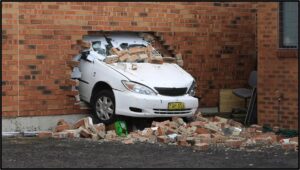
Project Description:
Masonry is widely used in Australia for housing and apartments. As urban populations rise and space becomes scarce, buildings closer to roads face an increased risk of vehicular crashes. Approximately 2000 such incidents occur annually, with a minority reported. This frequency has surged due to more vehicles, changing climate conditions, and aggressive driving. Many crashes result in vehicles breaching walls, harming occupants and causing property damage. A study has been undertaken using numerical techniques to understand masonry walls’ response to these impacts, leading to the development of mitigation strategies.
Research at QUT seeks to further understand masonry wall reactions to varying impact velocities using a specialized horizontal impact testing machine. This equipment boasts a pneumatically driven projectile, adjustable for different impact scenarios, capable of speeds up to 50 m/s. Advanced data systems and high-speed cameras record impacts at 50,000 frames per second, allowing in-depth analysis of the target structure’s response using 3D DIC techniques. Initial tests focus on comparing the resilience of untreated and treated masonry walls against vehicular collisions. Proposed mitigation approaches include using high-energy-absorbing auxetic composite renders and innovative vibration isolation techniques, diverging from traditional fortification methods.
| Project Details:
Duration: May 2020- Ongoing Research Methods:
|
Research Team: QUT :
Collaborative Partners:
|